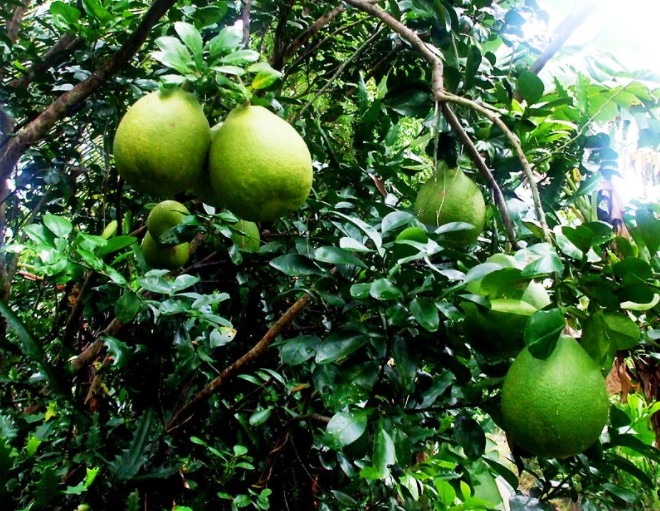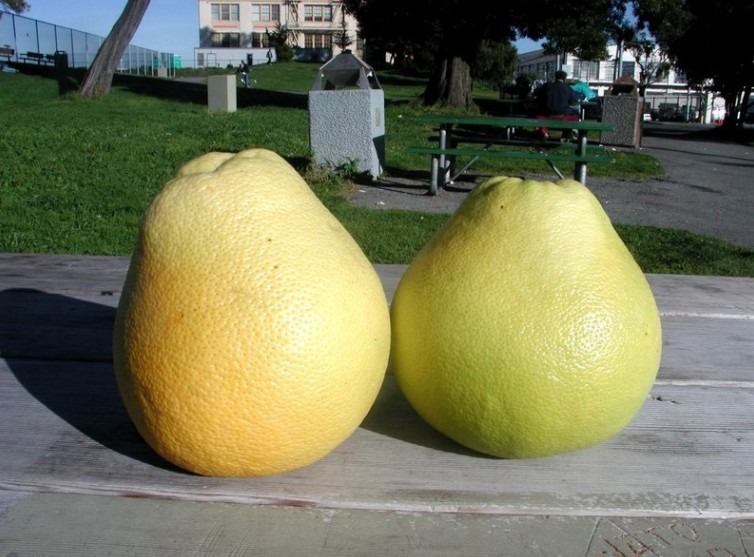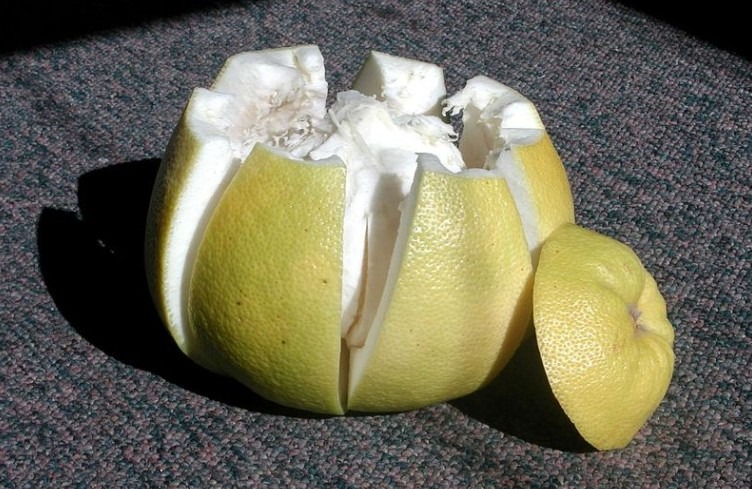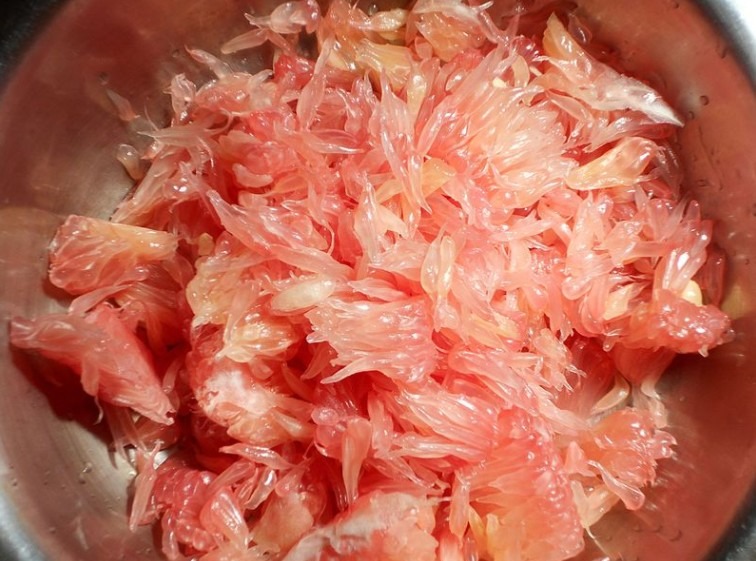We can’t simply talk about healthy Asian citrus fruits without mentioning pomelo. Due to its size, in the scientific world, it is known as Citrus maxima or Citrus Grandis.
This teardrop-shaped fruit, which is closely related to grapefruit, is as rich in juice as it is in history and benefits. Wondering how? Let’s take a small journey and find out everything that you need to know about this sweet citrus fruit.
History of Pomelo
This sweet green citrus fruit finds its roots back in Asia. Pomelo is known to be native to Southeast Asia, along with the entirety of Malaysia. If you were to visit the banks of rivers in Fiji, Tonga, and Hawaii, you’d find these fruits growing wildly along the bank, with no one, but nature, tending to them.
The history of this fruit isn’t certainly known, but they said to have been introduced in China before anywhere else, in the early days of 1000 B.C. Back then, its main areas of cultivation were in Jiangsu, Jiangxi, and the Fujian provinces in China. As time passed, the fruit found its way to be cultivated along the very well-known Tha Chin River located in the heart of Thailand. It was also later found being cultivated in the Philippines, Bangladesh, Japan, Myanmar, Tahiti, and various other parts of Asia.
From Asia, it made its way to the West Indies with the help of Captain Shaddock. He introduced the seeds of this fruit in the area in the 17th century. And due to his courtesy, the fruit came to be known as Shaddock, amongst the people in the area.
A Look: Inside & Out
On the Outside
At first glance, you notice that this citrus fruit looks a lot like the classic teardrop shape that we are all familiar with. It looks a lot like a grapefruit but can be bigger than it. With its green color, which is commonly seen and textured skin, pomelo gives a very authentic citrus fruit vibe.
Although it is most commonly found in a light green color, the outer peel of pomelo can range from a pale green to a yellow, depending on how ripe the fruit is. Depending on your taste palate, you can decide whether the fruit is ready or not.
Closer Look at the Peel
Speaking of the peel, the pomelo peel is considerably thicker than a lot of citrus fruits. And unlike other citrus treats, this one is also very rich in taste, which is why it is often utilized in making marmalades.
The sweetness of this peel is also what allows it to be used abundantly in Chinese cooking. It is used as a sweetener for a number of candies. In some other Chinese cuisines, it is also used to add flavor to sweet soups.
The Juicy Pulp
Once you get past the outer layers, at the very heart of the fruit lies a soft juicy pulp. This pulp is very similar to that of a grapefruit, in appearance, as well as in taste. It is very fleshy, juicy, and sweet. At its ripest stage, the pulp itself can be taken as a dessert, providing the ideal level of sweetness.
In appearance, the pulp can range between a clear pale-yellow color to a deeper pink or reddish color. This color also depends upon how ripe the fruit has gotten.
Health Benefits of Pomelo
Pomelo is a citrus fruit, and like any other citrus fruit, it comes with a wide range of benefits for health. So, while you enjoy a sweet time consuming these juicy fruits, you can rest assured that you are only consuming what is best for your health.
Although this fruit is packed with dozens of healthy compounds, we will only discuss a few of them. Now without further ado, here are some of the health benefits that you can reap just by enjoying these Asian citrus fruits.
- Healthy Source of Vitamin C
Pomelos are very rich in vitamin C, and vitamin C works wonders for your health. Vitamin C is an antioxidant that serves a lot of functions in the body. It helps promote healthier skin and takes care of periodontal diseases.
It also allows better and increased absorption of iron from sources other than meat. These two functions together keep you looking and feeling younger, even as the days pass by. You can say that by eating pomelo regularly, you can surely shed away some of those years from your skin.
- Dietary Fiber and Folic Acid
Being a citrus fruit, pomelo is bound to have these two components in its composition. And both of these components play a very crucial role in an individual’s health. Dietary fibers help clean out your digestive tract and prevent you from being constipated by stopping excessive reabsorption of water.
Folic acid, on the other hand, serves to strengthen the pre-existing red blood cells in your body, leading to strong and competent blood circulation. Consumption of folic acid at the time of birth can also prevent neural tube defects in the fetus.
That’s not all for folate. It also helps in the production of new somatic cells. This can be very important for infants and pregnant women, where the rapid division of cells takes place. Folate plays a vital role in preventing abnormal changes during these divisions that may lead to cancer.
- Substitute to Sugars
Like many other fruits, pomelo is a better substitute for unhealthy confectionary sugars. If you have a sweet tooth but are also looking to cut down on your harmful sugar intake, then consuming citrus fruits like pomelo can be the way out for you.
Pomelos can be very sweet when ripened enough and allow you to satisfy your sugar cravings without consuming the sugars that are generally bad for your health.
Fun Fact
Well, that was a lot of science and seriousness. So, before we end this article, let’s look at a fun fact about pomelo, as we discussed earlier how pomelos are similar to grapefruit. You may have also noticed that grapefruits are similar to oranges.
The fact is, this similarity exists because grapefruit is obtained by crossbreeding of pomelos and oranges. So, the next time the similarity of these fruits strikes you, you know why it is the way it is.
Conclusion
To sum up, what we learned today about this fruit, they’re Asian, coming from China, they’re healthy and, not to forget, they’re super sweet.
So, the next time you crave a bowl of sweetness sprinkled with health, grab a pomelo, make a salad, a dessert, or use it for garnishing. And if you don’t want company, you can also enjoy this juicy citrus fruitas it is!





